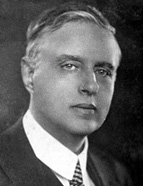

His main work, História geral das bandeiras paulistas [General history of the São Paulo flags] is the subtitle of his historiographical perspective: written in the light of a great deal of unpublished documentation from Brazilian, Spanish and Portuguese archives . This work is characterised by the search for modern truth by means of internal and external criticism of the sources, in accordance with the indications of Charles-Victor Langlois (1863-1929) and Charles Seignobos (1854-1942), by the confrontation with productions on the subject, and, above all, through the guidelines of João Capistrano de Abreu (1853-1927). By interpreting documents refined through rigorous documentary criticism and engaging in dialogue with other productions of the period, he crafted an epic history of the São Paulo flags. His work significantly contributed to the creation of narratives that became fundamental to the formation of São Paulo's identity. This monumental work resulted in eleven volumes, published between 1924 and 1950, dedicated to proving his thesis that São Paulo was the radiating centre of the "brave" sertanistas who explored Brazil, transforming a small expanse of land, delimited by the Treaty of Tordesillas, into an almost continental nation. His historical perspective contrasted with the so-called "battle history" dedicated to military and administrative history and was linked to the historiographical break made by Capistrano de Abreu, turning to the study of economic, religious, literary, artistic, and scientific history.
The links with Portugal were strong and maintained for a long time, especially through the relationship established with João Lúcio d'Azevedo. The meeting with João Lúcio d'Azevedo took place in the 1920s when he was promoting the books São Paulo nos primeiros anos [São Paulo in the early years], São Paulo no século XVI [São Paulo in the 16th Century] and Piratininga published in 1920, 1921, and 1923, respectively. With this trilogy, he inaugurated the already announced narrative of the "conquest of Brazil by the Brazilians" with the characteristics that characterised his writing about Brazil's colonial past. The person responsible for presenting them was the writer and friend Alberto Rangel (1871-1945), who sent copies of Taunay's books to João Lúcio d'Azevedo. The Portuguese historian confessed in letters to Taunay that his work "captures the attention like a novel, and one feels oneself living in the heart of that rudimentary Brazil". João Lúcio's perception was shared by many scholars of the period who praised Taunay's ability to evoke scenes from 16 th -century daily life in the reader's mind. With this theatrical sense, Taunay not only composed the exhibitions at the Museu Paulista , but also took part, alongside Edgar Roquette-Pinto (1884-1954), in the making of two films by Humberto Mauro (1897-1983): O descobrimento do Brasil [The Discovery of Brazil] (1937) and Bandeirantes [Flag-carriers] (1940). João Lúcio was interested in these developments in Brazilian historiography and asked his new Brazilian friend for the magazines of the Institutos do Rio de Janeiro [Institutes of Rio de Janeiro], of which he had been a corresponding member since 1895, and São Paulo, as well as the collection of documents used in the preparation of his books. On the other hand, the Portuguese historian represented Taunay's closest link to the Portuguese archives, and so he always used his friend's services to get copies of documents for the Museu Paulista and to fill in the gaps in his private research. In Taunay's work, which João Lúcio appreciated more for its style and method than for its subject matter, the progress of Brazil was already envisioned in the early years of São Paulo during the 16th century. On the other hand, in Política de Pombal relativa ao Brasil [Pombal's policy towards Brazil] presented by the Portuguese historian in 1922 at the First Congress of American History held by the Instituto Histórico e Geográfico Brasileiro , when Brazil was celebrating its independence from Portugal, the Marquis of Pombal emerged as a figure credited with "laying the foundations of nationality". The exchanges between these scholars reveal a field of contention over historical truths concerning the shared past of Brazil and Portugal. If in the theoretical field they shared an appreciation for the "modern principles" of criticising sources with the aim of achieving the truth, the content of that truth could be and was different.
This work is financed by national funds through FCT - Foundation for Science and Technology, I.P, in the scope of the projects UIDB/04311/2020 and UIDP/04311/2020.
